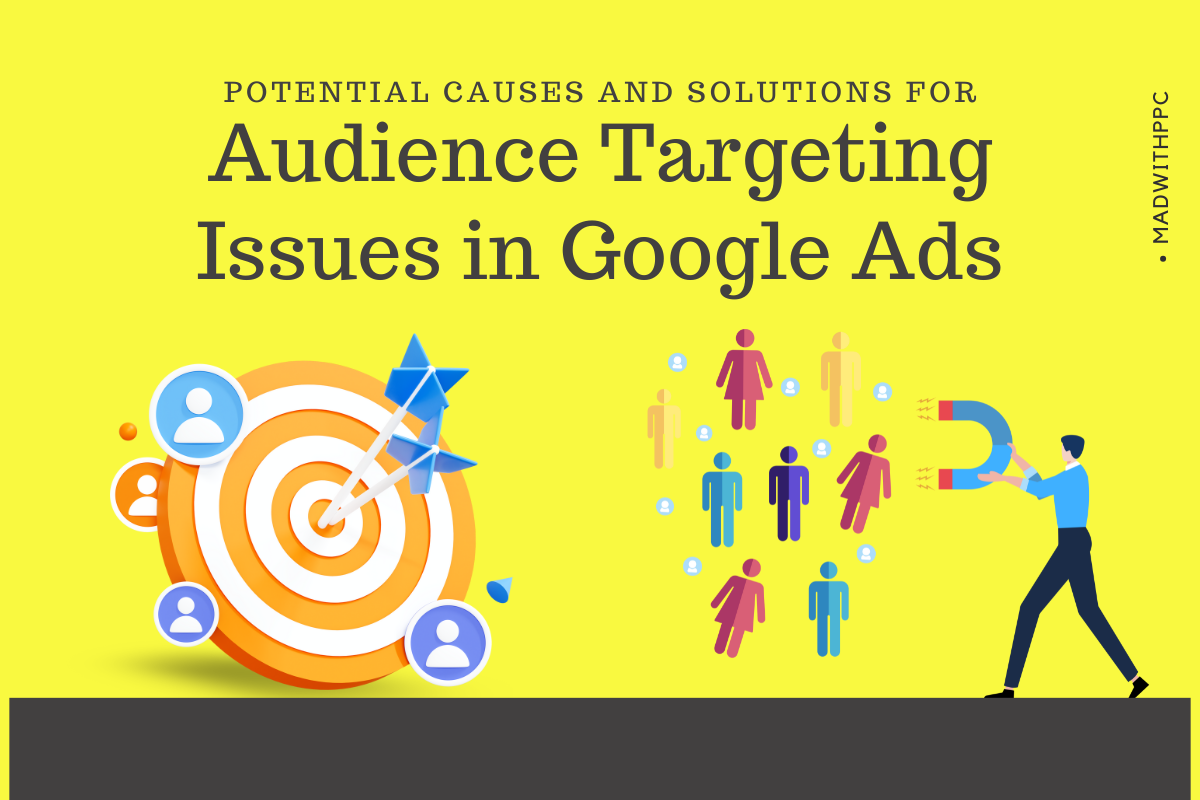When working with Google Ads, selecting the right audience is key to maximizing campaign performance. However, you may encounter errors or performance issues if your audience targeting settings are not configured properly. This guide addresses some of the most common causes and solutions to help you optimize your audience targeting.
1. Audience Targeting vs. Observation
What it Means:
You may have mistakenly set your audience targeting to Observation instead of Targeting, or vice versa. These two settings have different purposes:
- Observation: Monitors how your ads perform for selected audiences, but doesn’t limit who can see your ads.
- Targeting: Restricts the audience to only those who belong to the selected segments.
Solution:
- If you want your ads to show exclusively to specific audiences, make sure your campaign is set to Targeting.
- If you want to observe how different audiences perform but not limit your reach, set your campaign to Observation.
2. Audience Type Misalignment
What it Means:
You may have selected incompatible audience types within the same campaign. For example:
- Combining detailed demographics with In-Market audiences may create a mismatch in targeting logic.
Solution:
- Custom Segments work well with both Affinity and In-Market Audiences. However, avoid mixing highly specific audience segments (e.g., Demographics or life events) with general audience types (e.g., Affinity) unless they are complementary.
- Review your audience selection to ensure they align with each other. Use similar categories to maintain consistency and effective targeting.
3. Campaign Type Incompatibility
What it Means:
Some audience types may not be compatible with certain campaign types. For example, In-Market audiences might perform better in Search campaigns, while Affinity audiences work better in Display campaigns.
Solution:
- For Search campaigns: Use In-Market Audiences, Custom Segments, or Remarketing audiences. These are focused on users actively searching or researching.
- For Display campaigns: You can effectively combine Affinity Audiences with Custom Segments to reach a broader group of people interested in your product or service.
- Check Google Ads documentation to confirm which audience types are supported for your campaign format (Search, Display, Performance Max, etc.).
4. Layering Audiences Incorrectly
What it Means:
Layering multiple audience segments too aggressively can reduce your reach or contradict your campaign goals. For example, combining Custom Segments with Affinity Audiences may narrow your audience too much and limit exposure.
Solution:
- Avoid over-layering: Start with one audience type and assess its performance before adding additional layers.
- Test with broader audience setups first to see how well they perform. Once you’ve achieved a stable campaign, then start layering more specific audience types for fine-tuning.
5. Geographic or Demographic Restrictions
What it Means:
Geographic or demographic restrictions may conflict with your audience selection. For example:
- If you target a “Small Business Owner” audience but exclude certain locations, your audience targeting may contradict itself.
Solution:
- Check your exclusions: Ensure geographic and demographic exclusions align with your selected audience segments. If you’re targeting small business owners in a specific location, avoid excluding that location.
- Refine exclusions: Only exclude locations or demographics that are truly irrelevant to your audience.
6. Audience Size is Too Narrow
What it Means:
The selected audience may be too small, especially when combined with overly restrictive settings. This can cause your ad to be shown to very few people, impacting your overall performance.
Solution:
- Broaden your targeting:
- Expand your location settings: Widen your geographic target to reach a larger audience.
- Use broader custom intent keywords: Broader keywords help attract more relevant users.
- Reduce layered exclusions: Eliminate unnecessary exclusions that could shrink your audience size.
How to Fix It:
1. Review Campaign Settings:
- Go to the “Settings” tab in your campaign and confirm:
- The audience type aligns with your campaign goal (e.g., lead generation, sales).
- The audience selection is compatible with your campaign type (Search, Display, etc.).
2. Simplify Audience Targeting:
- Start with one audience type (e.g., Custom Segments or In-Market Audiences) and evaluate its performance before combining multiple audience types.
- Gradually test different combinations to ensure they’re compatible and work well together.
3. Check for Exclusions:
- Make sure you’re not excluding critical audiences that overlap with your targeting. If you exclude too many audiences, you risk reducing the reach significantly.
4. Validate Campaign Type Compatibility:
- Use Google Ads documentation or help articles to verify which audience types are supported for your chosen campaign type. This will prevent compatibility issues that can limit your campaign’s effectiveness.
Conclusion
When setting up audience targeting in Google Ads, it’s crucial to choose audience segments that align with your campaign type and goals. Misalignment in audience selection, improper layering, and overly narrow targeting can limit your campaign’s reach and performance. By following the solutions outlined in this guide, you can improve targeting efficiency, increase ad relevance, and drive better results for your campaign.


Comments are closed